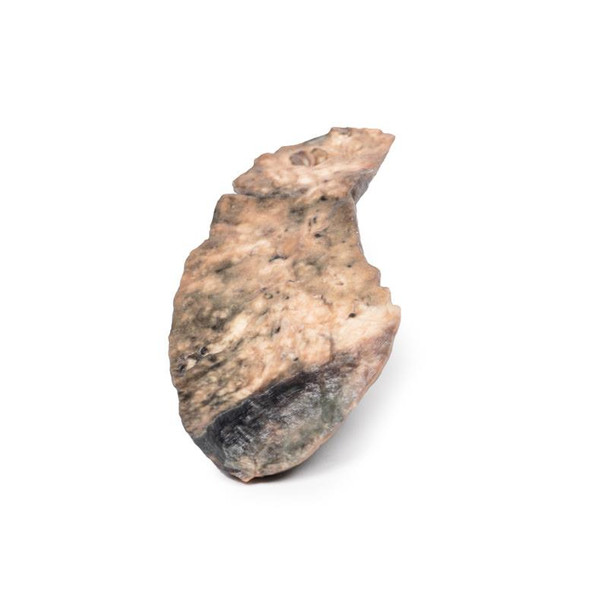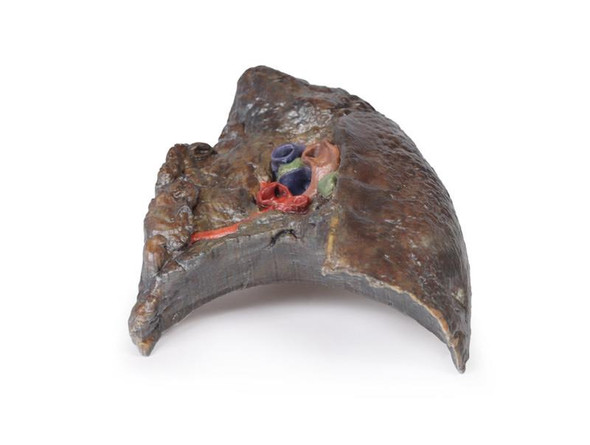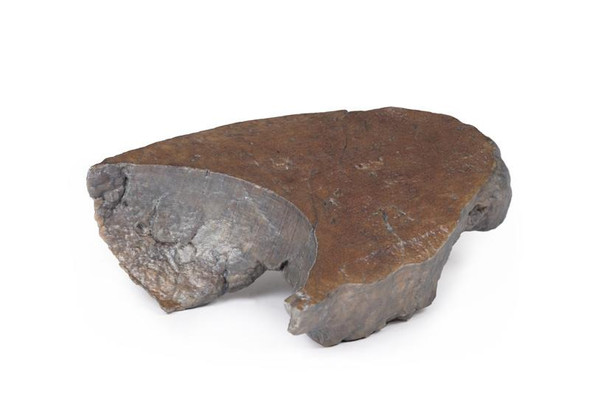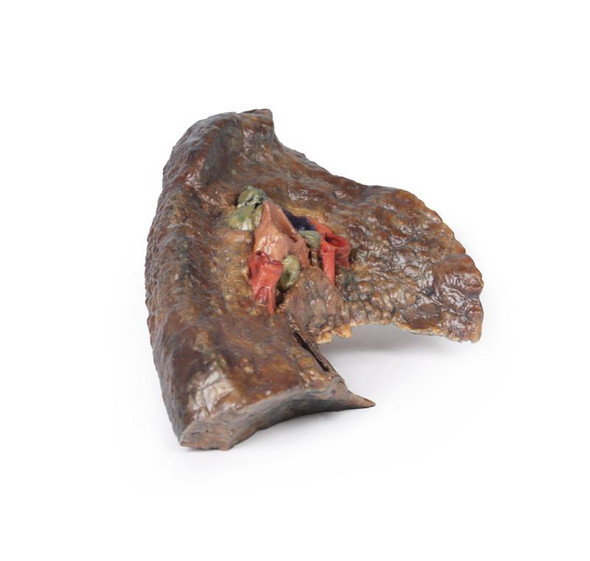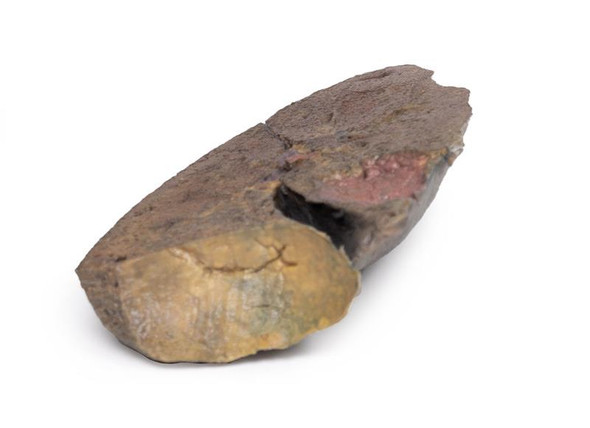Description
Clinical History
A 6-year old girl was admitted with a productive cough, dyspnoea and fevers. She became increasingly hypotensive and dies soon after admission. She had a previous history of recurrent pneumonia and meconium ileus. The clinical diagnosis was cystic fibrosis (mucoviscidosis). Her sister died aged 3 from the same disease.
Pathology
The lung parenchyma shows extensive changes mainly with a bronchial distribution. Many bronchi are dilated (bronchiectasis) and contain thick, yellowish, purulent material. These changes are most marked in the upper lobe, at the apex of which a small focus of honeycomb change is also seen. Multiple abscesses are present, especially in the basal and central parts of the lower lobe. The base of the lower lobe is severely affected with fibrosis and consolidation being evident. There is very little normal lung tissue remaining. These pathological changes are characteristic but not pathognomonic of cystic fibrosis.
Further Information
Cystic fibrosis (CF) is an inherited disorder of chloride ion transport. Mutations in the cystic fibrosis conductance regulator (CFTR) gene on chromosome 7 cause defects in the chloride channel protein leading to dysfunction of the chloride channels. This causes increased water absorption in exocrine glands and epithelium of the respiratory, gastrointestinal and reproductive tracts. These dehydrated viscous secretions then obstruct these organ passage causing clinical features including: persistent pulmonary infection, pancreatic insufficiency, liver cirrhosis, intestinal obstruction, male infertility, and elevated sweat chloride levels. In the airway, CF patients have decreased chloride secretion and increased water reabsorption. This causes dehydrated mucous lining the airways leading to defective mucociliary action, mucous obstructing the airway, bronchiole dilatation (bronchiectasis) and secondary infection. Staphylococcus aureus, Haemophilus influenzae and Pseudomonas are the most common bacteria causing CF patients lower respiratory tract infections. Chronic bronchitis and bronchiectasis develops as a result. Pulmonary issues are the highest cause of mortality in CF patients. The average life expectancy is between 40-50 years of age in developed countries.
CF occurs in around 1 in 3000 live births. It is inherited in an autosomal recessive pattern. It is most common in fair-skinned populations: with 1 in 20 being a carrier of the gene. Symptoms can present in-utero or even up to adolescence, depending on the severity of the disease. It is now most commonly diagnosed with the neonatal screening test for immunoreactive trypsinogen (a pancreas enzyme precursor). If this screening test is positive, a formal diagnosis is made with a sweat test showing >60mmol/L of chloride.
Advantages
- Anatomically accurate and identical to real specimen
- No ethical issues - not real human body parts
- Reasonably priced
- Available within a short lead time
- Reproducible, several identical prints can be used as a classroom set
- Can be produced in different sizes to cater for the needs of the teacher
Human Cadavers
- Access to cadavers can be problematic. Many countries cannot access cadavers for cultural and religious reasons
- Cadavers cost a lot money
- High cost for establishing your own plastination suite
- Wet specimens cannot be used in uncertified labs
- Dissection of cadavers is a lot of staff time and that is a cost
- Storage of cadaver material needs special refrigeration etc. which has coast
- If you want another specimen you have to start all over again
Plastinates
- Costs
- Ethical issues
- Timeframe for plastination process
- Many countries do not allow their importation
- One of a kind
Superior 3D print results compared with conventional methods
- Vibrant color offering with 10 million colors
- UV-curable inkjet printing
- High quality 3D printing that can create products that are delicate, extremely precise and incredibly realistic
Clear Support Material
- To avoid breakage of fragile, thin, and delicate arteries, veins or vessels, a clear support material is printed on such spots. This makes the models robust and can be handled by students easily.
